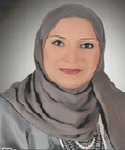Day 1 :
Keynote Forum
Elliot M. Levine
Illinois Masonic Medical Center, USA
Keynote: Proper Use of Episiotomy in Modern Obstetrics
Time : 09:00-09:25

Biography:
Dr. Elliot M. Levine received his Bachelor of Science from the University of Wisconsin at Madison in 1974 and his MD from the Chicago Medical School in 1978 and completed his Residency in Obstetrics and Gynecology at Illinois Masonic Medical Center in 1982. He has been Board Certified in Obstetrics & Gynecology continuously since 1984. He is a member of a number of medical societies including the American College of Obstetricians and Gynecologists, the Chicago Gynecological Society, the Central Association of Obstetricians and Gynecologists, and the American Medical Informatics Association, to name a few. His involvement in research, education and Quality Assurance has allowed him to author numerous articles in medical journals, leading him to often lecture to physician audiences. He has served as Director of Informatics and Research in a Department of Obstetrics & Gynecology for well over a decade and as a Physician Director for the implementation of an Electronic Medical Record System in a large healthcare system. He continues to have a general gynecology practice, and has been listed in America’s Top Doctors for over a decade.
Abstract:
Objective: A comparison was made of episiotomy rates and the rates of advanced perineal lacerations (APL) between different modern times, in order to view the likely consequences of performing episiotomy at vaginal delivery, and to consider applying this to obstetric quality standards.
Study Design: A Structured Query Language (SQL) perinatal database, used in a community hospital, was used to investigate the prevalence of episiotomy performed at vaginal delivery and the incidence of APL, for a comparison between different time periods. The type of obstetric provider, the type of episiotomy if performed, any associated operative procedures, neonatal birth weight and Apgar scores, estimated blood loss, and other obstetric variables were reviewed. rnrnResults: The average episiotomy rate steadily declined from 1996-1998, 2003-2005 and 2012-2014. The rate of advanced perineal lacerations coincidentally rose during these time period comparisons.
Conclusion: Obstetric providers may need to consider the likely outcome at vaginal delivery when considering to perform an episiotomy. Quality standards may need to more properly focus on the incidence of APL, rather than the episiotomy rate, given the clinical data that the authors examined.rn
Keynote Forum
Michael Kleerekoper
University of toledo ,USA
Keynote: POSTMENOPAUSAL OSTEOPOROSIS
Time : 09:25-09:50

Biography:
Michael Kleerekoper, MD, MACE, has joined the faculty at the University of Toledo Medical School where he is a Professor in the Department of Internal Medicine and section chief of the Endocrinology Division. He is also the author of numerous journal studies, Kleerekoper serves on the editorial boards for Endocrine Today, Endocrine Practice, Journal of Clinical Densitometry, Journal of Women's Health, Osteoporosis International and Calcified Tissue International. Dr. Kleerekoper is also a founding board member of the newly formed Academy of Women’s Health.
Abstract:
Osteoporosis is more common in postmenopausal women than in men of similar age. In those women who are not treated for menopause are more likely to develop bone loss and an increase in minimal trauma fractures. The current recommendations are that bone mineral density (BMD) should not be assessed before age 65 but one or two programs recommend an age 60 for the first Dual Energy X-ray Absorptiometry (DXA). Women who have additional post-menopause medical conditions and/or medications may have increased risk of minimal trauma fractures before age 60. DXA studies should be accompanied by laboratory studies that include serum calcium, serum creatinine, and 25 hydroxyvitamin D, as well 24 hour urine collection for calcium, creatinine, sodium, uric acid, and oxalate. Management is dependent on the bone density and biochemistry. The biochemistry includes markers of bone resorption i.e., C-terminal telopeptide of type 1 collagen (CTX), and bone formation i.e., bone alkaline phosphatase (B-ALP), C-terminal propeptide of type 1 procollagen (P1CP) and N-terminal propeptide of type 1 procollagen (P1NP). Regrettably the majority of DXA studies are performed and reported by bone density technicians and clinicians who have not been appropriately trained in the conduct and reporting of DXA and therapy is often incorrect. Once diagnosed as osteoporosis, there are several anti-resorption products that have been approved by the FDA or are in progress and teriparatide has been approved for stimulation of bone formation. Once a diagnosis of osteoporosis and appropriate therapy has been established, measurement of biochemical markers should be obtained at 6 monthly intervals until the levels are stable. If bone density is stable for five years, the therapy can be discontinued and biochemistry analyzed at 6-12 monthly intervals. More recent studies in progress include high resolution measurement of the distal radius and tibia using either high resolution Magnetic Imaging (hrMRI) or high resolution Dual energy X-ray Absorptiometry (hrDXA). hrDXA is also being study in the spine and proximal femur. These studies provide improved evaluation of skeletal health. Details of the above aspects of skeletal studies are shown in the accompanying illustrations and images.rn
Keynote Forum
Mouhanad Hammami
Chief of Health Operations, Michigan, USA
Keynote: Place Matters: The Social Determinants for Infant Mortality
Time : 09:50-10:15

Biography:
Mouhanad Hammami is a graduate of Aleppo University, Syria and completed his Postdoctoral research in Pediatrics at the Newborn Center of the University of Tennessee in Memphis, and then accepted a faculty appointment at Wayne State University School of Medicine in Detroit, Michigan and a research position at the Detroit Medical Center, Department of Pediatrics. In 2006, he was granted the American Medical Association (AMA) foundation for Excellence in Medicine and Leadership award for his public health advocacy and community work. He was awarded the “Health Policy Champion Award” by the Michigan Department of Community Health in 2011, Arab American of the Year in Medicine in 2012 and nominated by the White House for Heroes for Health in 2013. He served as Executive Director of the National Arab American Medical Association (NAAMA) from 2006 to 2009 and then elected as National President for 2011. He currently serves as the Chief of Health Operations of Wayne County Department of Health and Human Services and County Health Officer for Wayne County where he oversees all health related operations for the 13th largest County in the Nation. He is responsible for promoting and assuring health and quality of life by providing, maintaining, developing and coordinating a wide-range of innovative and fiscally responsible educational and health services including technology intitatives. He is a member of several professional and honor societies and has many publications in various peer reviewed medical journals.
Abstract:
Abstract : More babies die before their first birthdays in Wayne County and the city of Detroit than in many parts of the United States and the World. Sadly, the infant mortality rate in this region has been extremely high for several decades. This is unacceptable. It inflicts tragedy on families and costs billions of dollars in medical care. In addition, the infant mortality rate, the number of babies per 1,000 live births who die within the first year of life is an important indicator of a community’s health. In addition to overall high infant mortality rates, racial disparities also exist. Black babies in Wayne County and Detroit are more than twice as likely to die before their first birthdays as white babies. In Wayne County (excluding Detroit), the Infant Mortality Rate is 11.9 deaths per 1,000 live births for black babies (the same as some Third World Countries) and 5.9 deaths per 1,000 births for white babies (2008), according to the Michigan Department of Community Health. The rates in Detroit are even higher: 13.4 deaths per 1,000 births for black babies and 5.4 deaths per 1,000 births for white babies for the same year. Addressing the social determinants of health which are the conditions in which people are born, grow, live, work and age is important to understand how these factors contribute to infant mortality rates. These circumstances are shaped by the distribution of money, power and resources at global, national and local levels, which are themselves influenced, by policy choices. The social determinants of health are mostly responsible for health inequities - the unfair and avoidable differences in health status seen within and between countries. These factors include where a girl or woman lives and goes to school, what she eats, how she’s perceived and treated, whether she has a good job with equal pay, the quality of her relationships, and the extent to which she’s affected by racism. An “upstream” strategy is a radical departure from the traditional, “downstream” methods that have been tried for decades but have had limited and sporadic results. Traditional downstream interventions may be too little, and too late. rn
- Midwifery , Maternal Fetal medicine, Urogynecology , Gynecological Endocrinology, Gynecological Oncology
Location: Hall TX -C

Chair
Mouhanad Hammami
Chief of Health Operations and Human Services, USA

Co-Chair
Katie Moriarty
Wayne County Health Authority, USA
Session Introduction
Louisa M Tsweleng
University of Venda
Title: The culture of midwifery, as experienced by midwives in their practice during labour.
Biography:
Tsweleng M. L is curently working as Lecturer in Department of Advanced Nursing Science, University of Venda, South Africa. She is registered as a Ph.D. student at the University of Venda, South Africa in 2011, Doctoral research methodology, University of Johannesburg. She completed Mcur (Advanced Midwifery and Neonatal Nursing Science) from University of Johannesburg from 2001-2004 and Bcur I E (Nursing education and Administration), University of Pretoria from 1996-1998. She presented papers nationally and internationally and some publications are still under process.
Abstract:
Background Midwives and the care they provide to women, babies and families are most valuable to countries of the world. In South Africa midwives are key professionals in ensuring that women have a safe and a positive experience during their pregnancy, childbirth and postnatal period. Little is known about, the experience of midwives regarding, the culture of midwifery, in their practice Objective This study was designed to explore and describe the culture of midwifery, as experienced by midwives, when providing care to women during labour Methods A qualitative phenomenological design was used. Participants purposively selected in the labour ward of a midwife obstetric unit, in the semi-rural area in the far northern part of Pretoria, Gauteng province, South Africa.Individual-indepth interviews conducted with a semi –structured tool. Data analysed, using interpretative phenomenology. Findings Themes with the detailed description of the experience of midwives regarding the culture of midwifery in their practice during labour, emerged from the findings. Conclusions The findings highlighted the impact of the culture of midwifery in the practice of midwives during labour, a perceived by midwives. This will help to improve and better the practice and inform research
Luis Henrique
School of Nursing, York University
Title: The humanization of birth: the experience of Brazilian women
Biography:
Luis Henrique working at School of Nursing, York University.
Abstract:
Objectives The present study aims to explore the Brazilian child birthing experience, and identify how the puerperal woman experiences her pregnancy and birth in the humanized model of care. Methods A quali-quantitative research design was used to achieve the goals of the study by recruiting eighty individuals, after the birth process, in a maternity centre at a public hospital in Sao Paulo, Brazil. Data was collected through observation, semistructured interviews, and then a qualitative content analysis was performed. Results Among the individuals: 64% of them attended 8 to 10 consultations, and related more positive feelings to having a baby, showing a clear relation between attending to prenatal consultations and describing the birth as a positive experience; 85% of them used the benefit of having a birth companion, and it was described as reassuring. Conversely, those who experienced a more than six hours labour related the process as very painful. Nurses are the professionals most involved with the process, and their service was rated as very good by 53,8% and good by 43,8% of the responders. Conclusions The humanized birth is a long term process that starts during the prenatal period. Women well accept the process and consider it as beneficial, but when the labour takes long the most remarkable feeling is the pain. The birth process was considered as a remarkable life point as well as an event that brings great responsibility to the women's lives. Being the nurse the most involved professional, they have earned respect and admiration of postpartum women.
Michael Kleerekoper
University of toledo ,USA
Title: THE AGING HUMAN SKELETON: A BRIDGE TO NOWHERE?
Time : 9:30 -9:50

Biography:
Michael Kleerekoper, MD, MACE, has joined the faculty at the University of Toledo Medical School where he is a Professor in the Department of Internal Medicine and section chief of the Endocrinology Division. He is also the author of numerous journal studies, Kleerekoper serves on the editorial boards for Endocrine Today, Endocrine Practice, Journal of Clinical Densitometry, Journal of Women's Health, Osteoporosis International and Calcified Tissue International. Dr. Kleerekoper is also a founding board member of the newly formed Academy of Women’s Health.
Abstract:
Abstract : Osteoporosis is more common in postmenopausal women than in men of similar age. In those women who are not treated for menopause are more likely to develop bone loss and an increase in minimal trauma fractures. The current recommendations are that bone mineral density (BMD) should not be assessed before age 65 but one or two programs recommend an age 60 for the first Dual Energy X-ray Absorptiometry (DXA). Women who have additional post-menopause medical conditions and/or medications may have increased risk of minimal trauma fractures before age 60. DXA studies should be accompanied by laboratory studies that include serum calcium, serum creatinine, and 25 hydroxyvitamin D, as well 24 hour urine collection for calcium, creatinine, sodium, uric acid, and oxalate. Management is dependent on the bone density and biochemistry. The biochemistry includes markers of bone resorption i.e., C-terminal telopeptide of type 1 collagen (CTX), and bone formation i.e., bone alkaline phosphatase (B-ALP), C-terminal propeptide of type 1 procollagen (P1CP) and N-terminal propeptide of type 1 procollagen (P1NP). Regrettably the majority of DXA studies are performed and reported by bone density technicians and clinicians who have not been appropriately trained in the conduct and reporting of DXA and therapy is often incorrect. Once diagnosed as osteoporosis, there are several anti-resorption products that have been approved by the FDA or are in progress and teriparatide has been approved for stimulation of bone formation. Once a diagnosis of osteoporosis and appropriate therapy has been established, measurement of biochemical markers should be obtained at 6 monthly intervals until the levels are stable. If bone density is stable for five years, the therapy can be discontinued and biochemistry analyzed at 6-12 monthly intervals. More recent studies in progress include high resolution measurement of the distal radius and tibia using either high resolution Magnetic Imaging (hrMRI) or high resolution Dual energy X-ray Absorptiometry (hrDXA). hrDXA is also being study in the spine and proximal femur. These studies provide improved evaluation of skeletal health. Details of the above aspects of skeletal studies are shown in the accompanying illustrations and images.
Tatek Abate
Ethiopian Midwives Association, Ethopia
Title: To Assess Birth Outcome and Prevalence of Postpartum Morbidity Among Women
Time : 9:50 - 10:10

Biography:
Tatek Abate Zewdie present working at Ethiopian Midwives Association as Executive Director , With this position I am in charge for the overall leadership, management, representation of the association at national, regional and international level. In addition I am responsible in leading and coordinating the different units and programs in the association.
Abstract:
Abstract Introduction: In Ethiopia, an estimated 676 maternal deaths occur for every 100,000 live births. The major causes of mortality and morbidity are direct obstetric causes; they mainly occur from the third trimester of pregnancy to the first week following delivery. This study elucidates the type, magnitude and associated factors of postpartum morbidity conditions among pregnant women who gave birth at the health institutions and is essential to understand the health care need for obstetric emergencies, postpartum conditions and to prepare health organizations to better monitoring and evaluation of safe motherhood programs. Objective: To assess birth outcome and prevalence of postpartum morbidity among women attending antenatal care and gave birth at health institutions in Gondar town. Methods: We have conducted a four-month follow up study among 203 randomly selected pregnant women from five health institutions in Gondar town. Data were collected between March 1, 2010 and June 30, 2010 through interviews and physical examinations at four follow up visits: antenatal care, labor and delivery, 12th and 42nd postpartum days. We have used Epi Info 2002 for data entry and SPSS for data analysis. Results: A total of 203 (89.04%) pregnant women completed the four follow up visits and were included in the analysis. Postpartum morbidity conditions were found among 48 (23.6%) mothers, of whom 12 (5.9%) mothers had suffered two or more morbidity conditions. Overall, morbidity from postpartum hemorrhage had the highest prevalence 30 (14.8%) followed by sepsis and anemia. Intra-partum deviations were the main contributing factors to the postpartum morbidity conditions (AOR=4.148, P=0.027). There were 5(2.5%) still births and 38(18.7%) low birth weights. Conclusion and recommendation: The occurrence of postpartum morbidity, low birth and still birth among pregnant women attending & giving birth at health institution in Gondar town was significant health concern. Intrapartum abnormalities were the main predictive factors triggering maternal morbidity conditions. The time from birth to the first 6 hrs of purperum was the peak time to postpartom hemorrhage. Therefore, interventions such as universal use of the partograpgh, active third stage management and encouraging all delivering women to stay in the health institution during the first 24 hours of delivery could play a key role in reducing postpartum morbidity.
Noreen Zafar
Girls and Women Health Initiative, Pakistan
Title: Incidence of Pap smear based cytological abnormalities in a low risk group of Pakistani women
Time : 10:10 - 10:30

Biography:
Dr Noreen Zafar holds FRCOG from the Royal College of Obstetricians and Gynaecologists, London .She is the first Pakistani practitioner to be granted The Certificate of Completion of Specialist Training from the Joint Committee of Medical Royal Colleges, UK. Presently working as Consultant Obstetrician and Gynaecologist in Pakistan . Dr Zafar was honored with “National Women Award” for recognition of extra – ordinary services in the field of girls and women health on 4th August 2007 in Lahore.She was awarded the first International Individual Achievement John Eisenberg Award by the Joint Commission and The National Quality Forum , USA , in Oct 2009 in recognition of her extra ordinary services to the cause of girls and women's health in Pakistan. She was given the 'The Woman Of Excellence Award ' by Barclays Bank PLC in March 2011. Dr Zafar is the Founder and President of Girls & Women Health Initiative (GWHI, www.gwhi.org) , a not for profit, charitable venture, conceived to materialize the dream of empowering girls and women to take charge of their health and well being. (GWHI) is designed to reach out to the under privileged and poor population of girls and women. An important agenda is to de-myth gynaecology as a shameful topic, banned for discussions .
Abstract:
Cervical cancer is the second most common cancer among women worldwide, with 80% cases in the in developing countries. In Pakistan it is not considered to be a huge problem. This study was carried out to ascertain the incidence of abnormal Pap smears among Pakistani women, to objectively justify the need for a cervical cancer screening program in Pakistan. 525 patient case notes attending gynaecology out patients over 18 month’s period were reviewed. Spatula and cytobrush samples were taken for all post menopausal women and in those where squamo-columnar junction was not visible. All patients with HSIL & ASC-H underwent colposcopy & biopsy. Endometrial sampling was performed if indicated Results Negative for intraepithelial lesions, 56 % Inflammatory in 25.33 % Atrophic in 4 % Inadequate 1.33% Cytological abnormalities were present in -13.34 %. The incidence of cytological abnormalities among Pakistani women is significant .The progression of HSIL to invasive disease is well documented .This study highlights the urgent need for a national cervical pre-cancer screening program in Pakistan.
Suzan E. Mansour
Mansoura University, Egypt
Title: The Effect of Dysmenorrhea on Quality of Life of Technical Secondary Schools Girls
Time : 10:30 - 10:50

Biography:
Suzan Elsaid Mansour, an Egyptian Academic Staff is working a Lecturer at Faculty of Nursing at El-mansoura University. She is specialized in woman's health and midwifery nursing. She is also Lecturer at Faculty of Nursing, British University. She acts as a Manager of Education Development Center, Faculty of Nursing, Mansoura University. She has published several papers in national and international journals. In addition to her teaching responsibilities, she is a member in quality and accreditation committee and member of Mansoura University Laboratory Committee. She is a Manager for the Specialized Nursing Program of Technical Nursing Institution, Mansoura University. She also acts as Reviewer of International Journal of Medical and Health Science Research. She has experience in teaching undergraduate and post graduate students. She is interested in scientific research especially topics related to evidence based and quality of nursing care. Her ongoing mission is to develop nursing and to provide the highest quality nursing care to achieve excellence in patient results, and her role is to facilitate and deliver educational opportunities and experiences to all students.
Abstract:
Abstract Sexuality is an important part of normal human functioning. Gynecological cancer diagnosis and treatment has devastating effect on sexual issues. The study aim was to investigate oncology nurses’ knowledge and attitudes in relation to provision of sexual health care to women diagnosed with gynecological cancer. The study setting was conducted at oncology center, at Mansoura University Hospital after obtaining Hospital Director’s approval. A subject which consisted of 72 nurses who worked in Gynecological Oncology Department was considered for the study. Four tools were used by the researchers to collect pertinent data. (1) The Self-Administered Structured Schedule, (2) Sexual Health Care Scale–Attitude, (3) Facilitators about sexuality issue discussion in nursing practice, and (4) Barriers about sexuality issue discussion in nursing practice. Results revealed that 100% of nurses were having poor knowledge score regarding sexual health care with mean score 7.3±2.5. There was statistically significant relation between knowledge score and discomfort in providing sexual health care and fear of college’s negative response (P<0.05) while there was no statistical significant relation between knowledge score and feeling uncertain about patient’s acceptance and lack of environmental support (P>0.05). Majority of nurses reported that limited resources, patient embarrassment, staff shortages, patients having more things to be concerned about than having sex, inadequate education preparation, are the most important barriers to provide health sexual education. Provisions of relevant training, availability of private environment, having good nurse patient relationship, good communication are factors which facilitate provision of sexual health care. It was concluded that oncology nurses have poor knowledge score and a feeling of discomfort in the provision of sexual health care. There are many issues acting as barriers and facilitators affecting nurses for providing sexual health care. It is important to put sexual health education into the curriculum of nursing, in order to assess the sexual health of patients within the health care system, continuing education activities and availability of education materials could assist nurses to adequately address sexual concerns while caring for patients with cancer and more research is needed on training of the nurses to overcome the barriers and guidelines or procedures in place for dealing with sexuality-related issues with patients.
M.KAAVYA
Sree Balaji Medical College and Hospital, India
Title: PERIPARTUM CARDIOMYOPATHY-A CASE REPORT
Time : 10:50 - 11:10

Biography:
M Kaavya is in her second year Post-graduation in Obstetrics & Gynecology in Sree Balaji Medical College, Chennai, India. She has presented a paper in IMSACON 2014 (International Conference) held in Bangkok, (Thailand). Her paper focused on “Previous uterine scar on present placental location”.
Abstract:
Abstract Background: Peripartum cardiomyopathy is an unusual form of dilated cardiomyopathy with unknown etiology, that can be fatal in young women but with prompt diagnosis and intensive supportive measures can successfully be treated with good long term prognosis in 90% cases. We report a previously asymptomatic women with no risk factor presented with pulmonary odema on day three of cesarean section who is now under periodic ECHO follow up to assess the recovery in cardiac function. Case Report: 28 years old primigravida married for two years, GDM on meal plan underwent cesarean section at 40 weeks for fetal distress. Intrapartum and initial postpartum period were uneventful. On third postoperative day, patient developed acute breathlessness with bilateral extensive basal crepts. ECHO picture suggested peripartum cardiomyopathy. Patient shifted to ICU and treated with respiratory support, inotropes, diuretics and other supportive measures. Patient was symptomatically better on fifth postoperative day and discharged at request on fourteenth postoperative day explaining the need for regular follow up and the high risk of recurrence of peripartum cardiomyopathy in subsequent pregnancies. Discussion: Though peripartum cardiomyopathy is relatively a rare disease (0.1% of pregnancies) it can lead to devasting consequences with overall morbidity mortality rates as high as 5 to 32%.The diagnosis of peripartum cardiomyopathy is challenging since most women in last month of normal pregnancy or soon after delivery experience dyspnoae, fatigue and pedal odema,(as in our case). Hence the treating physician should have high index of suspicion and consider it when managing dyspneic patients to expedite medical treatment for this potentially lethal condition.
Abinaya Vijayan
Sree Balaji Medical College and Hospital, India
Title: Careful Diagnosis and Management of Monochorionic Monoamniotic twins
Time : 11:10 - 11:30

Biography:
Abinaya Vijayan is doing her final year Post-graduation in Obstetrics and Gynaecology (MS) at Sree Balaji Medical College & Hospital, Chennai, Tamilnadu, India. She has presented a paper in International Conference IMSACON.
Abstract:
Abstract Monochorionic monoamniotic twins are subtype of monozygotic twin pregnancy. These twins are rare, occurring in approximately 1 in 35,000 to 1 in 60,000 pregnancies. These twins are associated with increased morbidity and mortality. Hence with early diagnosis of chorionicity and amnionicity and its associated complications, the rate of fetal loss can be reduced. Intensified antenatal monitoring is required from 1st trimester onwards. We report a case of second gravida with previous normal vaginal delivery with monochorionic monoamniotic twin pregnancy. She was diagnosed at 11 weeks gestation by ultrasound. From then she was monitored extensively and was allowed for spontaneous onset of labour at 37 weeks. She delivered two alive babies with good APGAR score. With careful monitoriong throughout pregnancy, good prognosis and outcome can be achieved.
Mohammad Othman
University of Liverpool, UK
Title: Probiotics for the prevention of preterm labour
Time : 11:30 - 11:50

Biography:
Mohammad Othman has completed his PhD from University of Liverpool. He is Assistant Professor of Obstetrics and Gynecology in University of Al-Baha Medical College. He has published three books and more than 25 papers in reputed journals and has been serving as an editor and referee of more than 32 medical publications and databases.
Abstract:
Abstract Preterm birth causes 60% to 80% of neonatal deaths. Survivors can experience life-long complications. Thirty to fifty per cent of preterm labours are associated with maternal infection. Probiotics are defined as live micro-organisms which in adequate amount confer a health benefit on the host. They have been shown to displace and kill pathogens and modulate the immune response, thus potentially interfering with the inflammatory cascade that leads to preterm labour and delivery. During pregnancy, local treatment which restores normal vaginal flora and acidity without systemic effects is preferred over other treatments to prevent preterm labour. The objective is to evaluate the effectiveness and the safety of probiotics for preventing preterm labour and birth. We assessed seven trials for inclusion in the review and included three trials. Effects on very preterm birth (risk ratio (RR) 0.65; 95% confidence interval (CI) 0.03 to 15.88) and preterm birth (less than 37 weeks) (RR 3.95; 95% CI 0.36 to 42.91) showed very wide CIs and no effect of statistical significance (one trial; 238 women). Effects on neonatal death or severe morbidity were not estimable. The impact of probiotics on vaginal infection was based on only 88 women in two trials. There was an 81% reduction in the risk of genital infection with the use of probiotics (RR 0.19; 95% CI 0.08 to 0.48). Although the use of probiotics appears to treat vaginal infections in pregnancy, there are currently insufficient data from trials to demonstrate any impact on preterm birth and its complications.
S Nafees Bano
HSZH ,Govt. Unani Medical College, INDIA
Title: Treatment of uterine leiomyoma with sal ammoniac: A single-blind randomized placebo controlled study
Time : 11:50 - 12:10

Biography:
Dr. S. Nafees Bano is a Professor in the Department of Obstetrics and Gynecology, Hakim Syed Ziaul Hasan Govt. Unani Medical College & Hospital, Barkatullah University, Bhopal, M.P. She graduated from Hamdard Tibbi College, Delhi University in 1990 and started giving her services as a gynecologist. She started her academic career in 1995 and has been giving her services in various Unani Medical Colleges and Hospitals. She received her M.D. in 2008 from National Institute of Unani Medicine, RGUHS, Karnataka. In her 20- year long career she has been giving her services as Examiner in various Universities, Supervisor for M.D. theses, Subject Expert in various Selection Boards & MPPSC, Resource Person, Guest Speaker, Chairperson in Workshops, Training Programmes and Seminars & is the Chairman, Board of Studies, Barkatullah University, Bhopal. She has presented papers in various Conferences and Seminars and delivered a talk on women health issues on All India Radio, Bhopal. She is also the Chairman, IEC, CCRUM, Bhopal for the current year.
Abstract:
Abstract Introduction: Uterine leiomyoma is the commonest tumour found in women. It constitutes a major public health cost to the community in terms of outpatient attendances and hospital costs for surgery of the disease. Objective: Women are seeking alternatives to conventional medications and surgery for the treatment of leiomyoma. Therefore, it is important to test whether Sal Ammoniac is efficacious and safe in the management of leiomyoma. Design: Randomized single-blind placebo controlled trial is designed. Setting: Outpatient Department, National Institute of Unani Medicine Hospital, Bangalore. Population: 40 patients with diagnosed uterine leiomyoma. Methods: Randomization to either 2 gm sal ammoniac with 5 ml glycerin twice (N=25) daily or placebo (N=15) twice daily for 12 weeks from inclusion. This was a USG based study. Assessment of menorrhagia was done by the patient and assessment of dysmenorrhoea was done by pain rating scale. The impact of leiomyoma related symptoms on quality of life (QOL) was assessed by using a validated questionnaire. Results: There was significant improvement in menorrhagia and dysmenorrhoea. Mean leiomyoma size decreased by 18% at 45 days and 35.19% at 90 days of Sal Ammoniac therapy. Patients treated with placebo had an increase in mean leiomyoma size of 33% at 90 days follow up. No side effects or adverse were reported with the drug. A significant improvement in the symptom score and QOL score was observed at 90 days follow up. Conclusion: In this study, Sal Ammoniac successfully reduced the size and symptoms of leiomyoma in short-term follow up. Additional studies are needed before its efficacy and safety can be confirmed.
Ariel Polonsky
"Laniado" medical center, Netanya, Israel.
Title: Viable triplet pregnancy coexisting with a complete molar pregnancy
Time : 12:10 - 12:30
Biography:
Ariel Polonsky working as a resident at Laniado medical center, Netanya, Israel.
Abstract:
Abstract Gestational trophoblastic disease is a proliferative disorder of trophoblastic cells. In our case an 11 weeks pregnant patient who turned up for medical evaluation due to mild vaginal bleeding and diarrhea, was diagnosed with triplet viable fetuses along with a complete molar pregnancy after a cycle of timed intercourse and clomiphene citrate stimulation. The risks of a singleton molar pregnancy are well known and include: Severe vaginal bleeding, hyperthyroidism and thyroid storm, early onset preeclampsia and hysterectomy. In addition, persistent trophoblastic disease and chemotherapeutic treatment is also a known risk even after evacuation of the pregnancy. The incidence of these same risks, increase dramatically with every additional fetus alongside the mole. After literature review and from our experience we assumed a higher theoretical risk for pregnancy complications and PTD for our patient. Keywords: triplet pregnancy, molar pregnancy, artificial reproductive technology Abbreviations: Gestational trophoblastic disease (GTD), Persistent trophoblastic disease (PTD), Human chorionic gonadotropic (hCG), Termination of pregnancy (TOP), Maternal fetal medicine (MFM), international units (IU).
B Saranya
Sree Balaji Medical College & Hospital, India
Title: Clinical presentation of ectopic pregnancy presented as PID – A case report
Time : 12:30 - 12:50

Biography:
B Saranya is doing her first year post-graduation in Obstetrics and Gynecology at Sree Balaji Medical College & Hospital, Chennai, Tamil Nadu, India.
Abstract:
Abstract Ectopic pregnancy, also known as eccyesis or tubal pregnancy, is a complication of pregnancy in which the embryo attaches outside the uterus (the cervix, ovaries, or within the abdomen). Clinical trial of ectopic pregnancy is abdominal pain, vaginal bleeding and a period of amenorrhoea. Detection of ectopic pregnancy is typically by blood tests for human chorionic gonadotropin (hCG) and ultrasound. A success in the management of ectopic pregnancy lies in the prompt diagnosis and proper management. Some ectopic pregnancy may present without a period of amenorrhoea, which warrants high index of suspicion. Here, we report a case of 27 year old patient with a case of ruptured ectopic pregnancy presented with abdominal pain and spotting PV without a period of amenorrhoea. Her ultrasound was suggestive of pelvic inflammatory disease, Beta HCG - 6725mIu/ ml and UPT is negative. Patient was taken up for diagnostic laparoscopy & proceeded with left salphingectomy.
K Sofia Mercy
Sree Balaji Medical College & Hospital, India
Title: Incarcerated vaginal pessary- A report of two cases
Time : 12:50 - 1:10

Biography:
K Sofia Mercy is in her final year Post-graduation in Obstetrics and Gynecology (MS) at Sree Balaji Medical College & Hospital, Chennai, Tamilnadu, India. She has presented a paper in AICOG 2015.
Abstract:
Abstract Background: Vaginal pessaries have been offered as a first line of treatment for symptomatic prolapse in women not willing for surgery, not fit for surgical interventions and young women who wish to postpone surgery. We report two cases of partially incarcerated vaginal pessary. Case Report 1: 68 years P8L7A1 diabetic on treatment presented with complaints of supra pubic pain and Dysuria. She is a known case of pelvic organ prolapse for which vaginal pessary was inserted 2 years back at sirkazhi, with instructions for follow up every 3 months. She had no difficulties with the pessary, so she did not turn for follow up. Case Report 2: 75 years old P6L4D3A1 hypertensive on treatment, known to have a case of pelvic organ prolapse for 10 years, presented to the OPD for her routine 3 monthly pessary review with no complaints. Local examination of both the cases showed displaced vaginal pessary, first case embedded in the posterior vaginal wall and the second case in the lateral vaginal wall with a 2 cm band of vaginal epithelium between two entry points. Both cases pessaries were removed under IV sedation by cutting the ring pessary with scalpel. Discussion: Incarcerated vaginal pessary is the one which is displaced from its original position and becomes embedded in the vaginal or cervical mucosa. Complications with ring pessaries are vaginal bleeding, discharge, voiding and defecating dysfunction. Neglected pessary if left in situ for years, may erode into the rectum or bladder causing rectovaginal or vesicovaginal fistula. Early vaginal ring pessary entrapment may be related to the type of pessary material, concomitant vaginal atrophy, and inherent local tissue reaction in response to chronic vaginal irritation. All patients should be educated about self-care and the significance of strictly timed follow-up visits.
